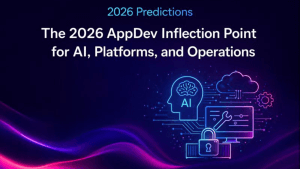Unified, open source AI platform delivers scalable inference, agent-ready infrastructure, and collaboration across hybrid environments
The News
Red Hat announced Red Hat AI 3, the next major evolution of its enterprise AI platform that unifies Red Hat Enterprise Linux AI (RHEL AI), Red Hat OpenShift AI, and the Red Hat AI Inference Server into a single, production-grade stack for scalable, high-performance AI.
The release marks a shift from AI experimentation to enterprise-scale inference and agentic AI. With capabilities such as distributed inference via llm-d, Model as a Service (MaaS), and AI Hub collaboration tools, Red Hat AI 3 seeks to help organizations operationalize generative and agentic AI workloads efficiently, securely, and on their own infrastructure whether in datacenters, public cloud, or sovereign environments.
From AI Training to AI Doing
Enterprises are moving beyond model training to focus on inference (the “doing” phase of AI) where performance, governance, and cost optimization determine success. According to MIT NANDA’s GenAI Divide study, 95% of organizations have yet to realize measurable ROI from $40 billion in AI spending which highlights the need for production-grade platforms.
Red Hat AI 3 is looking to address these challenges by bringing llm-d (its open source distributed inference engine) into general availability. Built on the vLLM community project and integrated natively into Kubernetes, llm-d enables inference-aware scheduling, disaggregated serving, and cross-platform accelerator support (AMD Instinct™, NVIDIA GPU, and others). The result should be predictable performance, lower cost per token, and simplified orchestration across hybrid environments.
For CIOs and IT leaders, the focus now shifts from experimentation to infrastructure efficiency through maximizing accelerator utilization, maintaining sovereignty, and ensuring reproducibility. Red Hat’s embrace of Kubernetes Gateway API Inference Extension, NVIDIA Dynamo (NIXL), and DeepEP MoE libraries frames the platform as a multi-vendor, inference-native orchestration layer, not another siloed AI product.
A Unified Platform for Collaborative, Production-Ready AI
Beyond performance, Red Hat AI 3 delivers a unified collaboration layer that bridges platform engineering and AI development. The introduction of AI Hub, Gen AI Studio, and Model as a Service (MaaS) brings transparency and shared workflows across teams, reducing friction between infrastructure and data science functions.
- AI Hub acts as a curated catalog of validated and optimized models, simplifying lifecycle management and deployment monitoring across OpenShift AI clusters
- Gen AI Studio provides a hands-on environment for developers to experiment with models, prompts, and RAG pipelines, connecting directly to managed endpoints for rapid prototyping
- MaaS capabilities allow organizations to host shared, secure model-serving endpoints that operate under internal governance, an important consideration for sectors unable to rely on public AI services due to privacy or compliance mandates
These combined features transform Red Hat AI 3 into an enterprise collaboration fabric for AI, where developers, operators, and data teams share one control plane, one governance model, and one source of truth.
Building the Foundation for Agentic AI
While inference scalability solves today’s bottlenecks, Red Hat AI 3 also looks forward, establishing the underpinnings for agentic AI systems. The release introduces a Unified API layer built on Llama Stack, aligning with OpenAI-compatible LLM interfaces, and implements the emerging Model Context Protocol (MCP) standard to streamline model-to-tool communication.
These standards-based components frame Red Hat AI 3 as a platform for autonomous, interoperable agent development, critical as organizations begin orchestrating multi-agent systems that reason, act, and learn across distributed environments.
Complementing this, a new model-customization toolkit expands Red Hat’s InstructLab initiative. It includes:
- Docling, an open source document ingestion library for unstructured data
- Synthetic data generation and training hubs for secure fine-tuning
- Evaluation dashboards that help teams validate performance against proprietary datasets
Together, these tools lay the groundwork for customizable, governed AI agents built with transparency and reproducibility at enterprise scale.
The Open Ecosystem Advantage
As enterprises wrestle with AI lock-in, Red Hat doubles down on openness as a differentiator. By integrating with AMD EPYC™ processors, Instinct™ GPUs, and the ROCm™ software stack, Red Hat AI 3 guarantees hardware flexibility across datacenter, cloud, and edge.
Global customers such as ARSAT, the Argentinian telecommunications provider, have already used Red Hat OpenShift AI to deploy agentic AI platforms in less than 45 days, showcasing the platform’s readiness for real-world, sovereign-data applications.
Looking Ahead
The release of Red Hat AI 3 signals an era in enterprise AI operationalization, one defined by distributed inference, unified collaboration, and open agentic architecture. In 2026, as inference workloads outpace training by orders of magnitude, the success of AI initiatives will depend on platforms that are efficient, interoperable, and governed.
By bridging inference scalability with agentic readiness, Red Hat AI 3 sets the template for how open source ecosystems can rival closed-loop AI stacks without sacrificing flexibility or control. Expect Red Hat to extend this platform further through expanded MCP integrations, AI Hub federation, and deeper collaboration with hardware partners to enable agent orchestration across hybrid clouds.
Key Takeaways
- Red Hat AI 3 unifies RHEL AI, OpenShift AI, and AI Inference Server into one open, enterprise-grade AI platform.
- Distributed inference with llm-d delivers scalable, cost-efficient performance for LLMs across hybrid environments.
- AI Hub, Gen AI Studio, and MaaS streamline collaboration between developers and platform teams.
- Unified API & Model Context Protocol form the foundation for interoperable, agentic AI systems.
- Open hardware ecosystem (AMD, NVIDIA) ensures flexibility from datacenter to sovereign cloud to edge.



